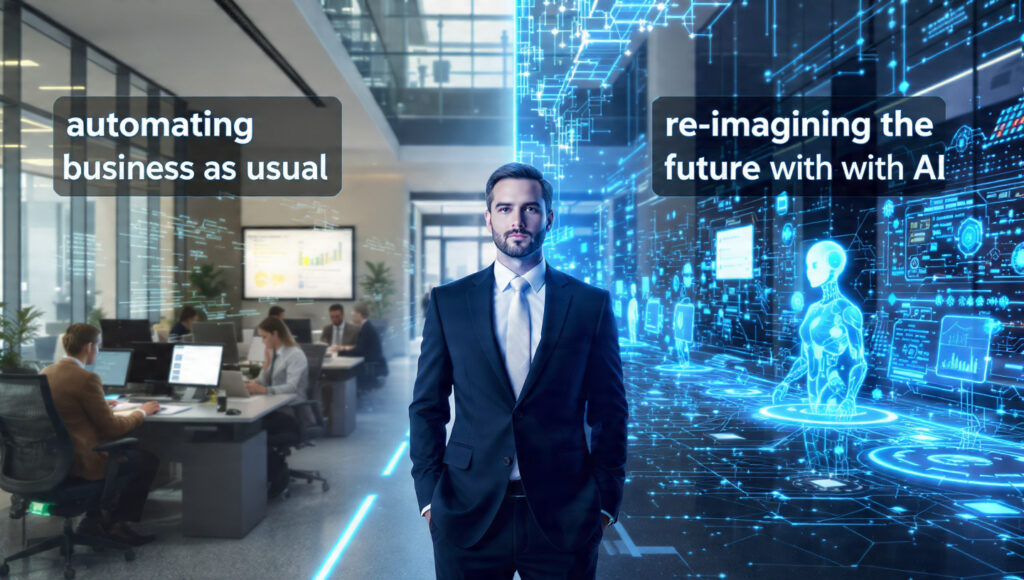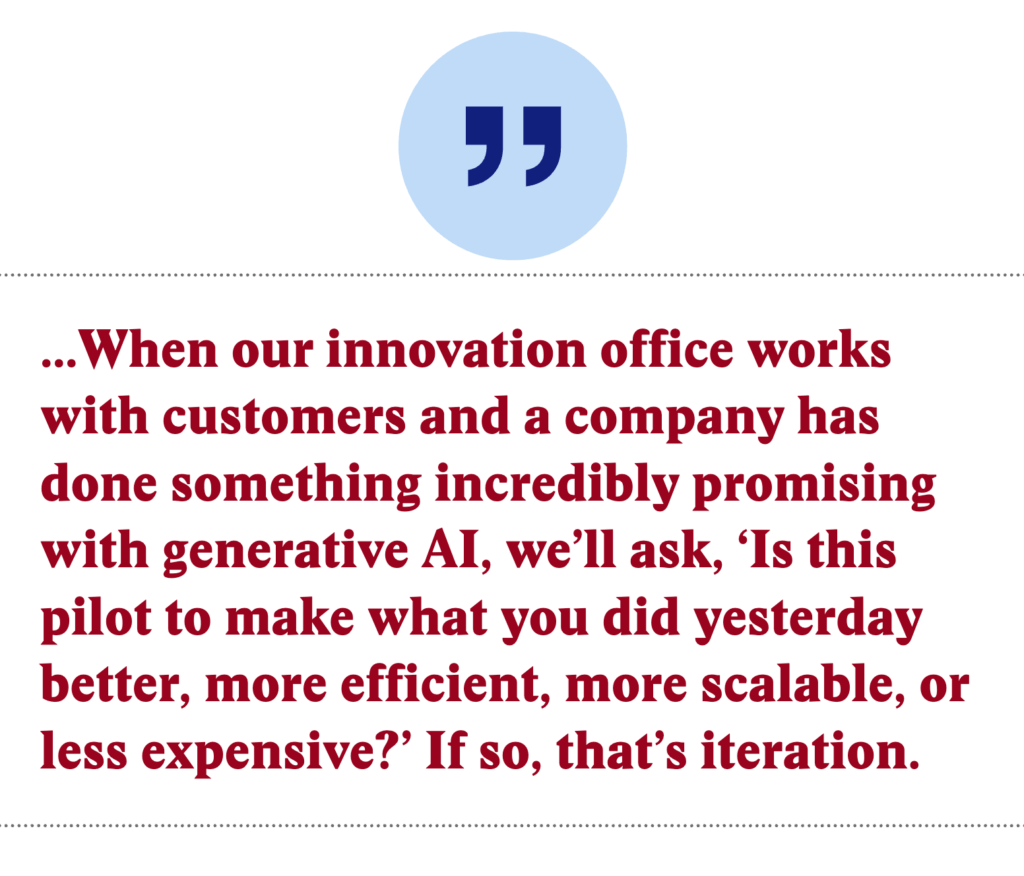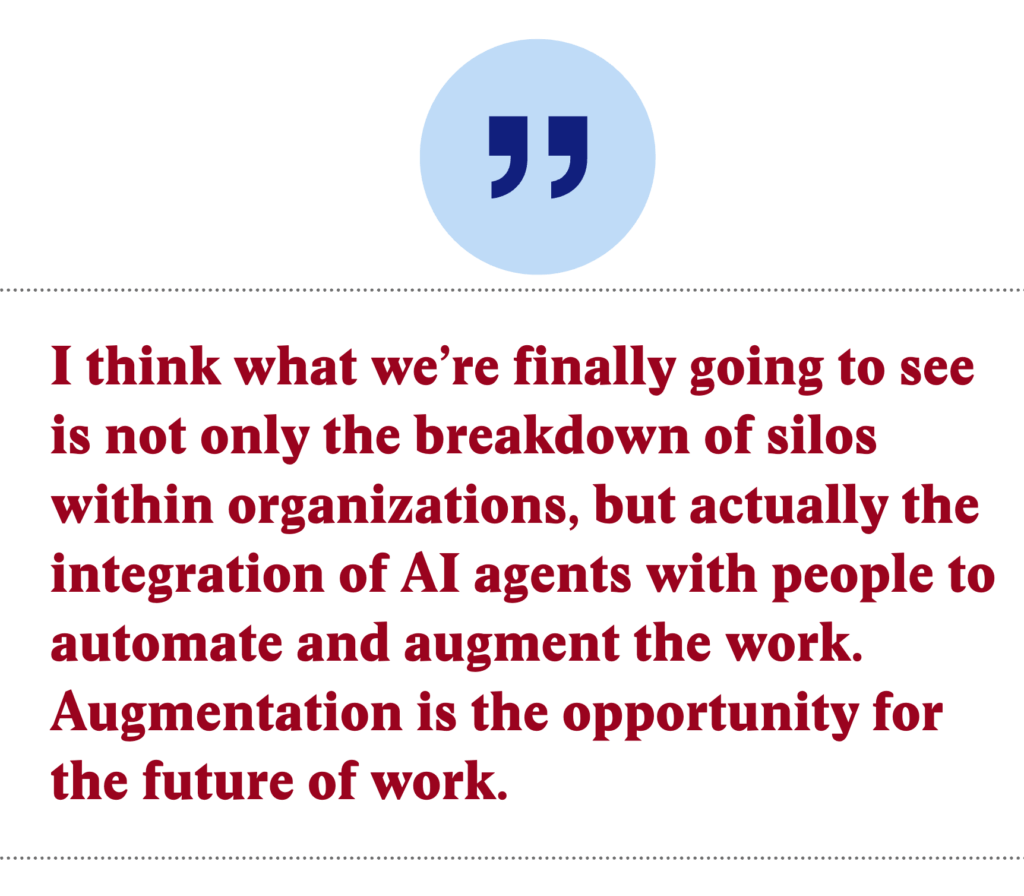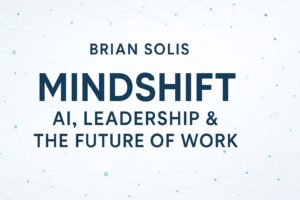
Every company says they “do AI.” Few can show meaningful outcomes.
We’ve been intentional about iteration and innovation. Iteration makes yesterday’s work more efficient. Innovation creates new value.💡 When you separate the two, you can measure cost takeout and progress…and prioritize what matters.
If you’re leading transformation, ask: are your AI investments making yesterday cheaper…or creating tomorrow’s value?
Please read this awesome piece by Dawn Kawamoto for InnoLead and let’s talk about where your org sits on the AI iteration–innovation curve.
Using AI to Support Innovation (and Iteration) at ServiceNow
Since its founding in 2004, Silicon Valley-based ServiceNow has been all about automating business workflows. So in the current AI era, the $11 billion company is focused on how various types of AI will support that automation. Often, ServiceNow’s own employees are “customer zero” for new offerings — early adopters for the products and services it builds.
Already, the company’s AI strategy is helping to reduce service volume by 40 percent, and generating millions in annualized value from AI agents that provide support to its 8,400 global customers.
Brian Solis, Head of Global Innovation at ServiceNow and author of the recent book Mindshift, recently spoke with InnoLead about the software-as-a-service giant’s deployment of AI; the results it’s producing; and the importance of defining both “iteration” and “innovation.”
Can you tell me about your role and how it’s defined?
We have a unique office here. The innovation office is led by my boss, Dave Wright, our Chief Innovation Officer, and my job is to lead a group of what we call innovation officers and futurists in helping our customers and ourselves navigate all these disruptive trends and opportunities, especially now in an era of AI.
We also publish original research and thought leadership inspired by countless conversations with executives on the questions they have, the difficulties and challenges they’re trying to navigate, and also the opportunities that they may not see. Things are moving pretty fast, and it’s easy to react rather than plan ahead, so all that research and thought leadership is published. We’re now occasionally publishing it externally, and we’re also publishing internal-only insights for our executives to help them navigate these trends.
How is AI and GenAI being used at ServiceNow?
What’s really interesting about ServiceNow is that we actually use our stuff, so that we can be “customer zero.” We have an organization within ServiceNow called Now on Now, which tells the ServiceNow story of how we utilize our products.
For example, with GenAI and, especially, AI agents, we utilize our agentic workforce. We’re using AI agents to resolve service tickets, apply system patches at scale proactively, and provide summaries to our human IT managers. And when it comes to scaling software provisioning for our 27,000 employees, it’s a prime opportunity for AI and AI agents.
What impacts have you seen from your internal use of AI and GenAI at ServiceNow?
We’ve actually automated 97 percent of our provisioning requests and reduced service volume by 40 percent. We’re also using AI agents in customer support, which is an interesting use case because it demonstrates what we believe the story around AI needs to be — annualized value from AI agents, and we’re already realizing $350 million. But more importantly, when we can automate the routine, we’re freeing up our human agents to spend more time with customers in realizing value from their investments.
As you journey further into AI and GenAI, what are some of the challenges you are working through?
If you consider how our company has grown over the past couple of decades, the platform we built from the very beginning was the challenge we faced then and still face today. That challenge comes from the legacy mindset companies have about software. Over the years, technology, data, and workflows have become beholden to silos. And now with AI, which feeds on data, it is as effective as the platform it runs on.
The challenge and opportunity for ServiceNow is to help change the mindsets of today’s organizational leaders to recognize that when they see studies like MIT’s, which says that 95 percent of AI investments aren’t realizing value, it’s because of the human capacity for implementing pilots within modern constructs.

For example, when our innovation office works with customers and a company has done something incredibly promising with generative AI, we’ll ask, “Is this pilot to make what you did yesterday better, more efficient, more scalable, or less expensive?” If so, that’s iteration. Innovation is doing what you didn’t do yesterday to create new value.
An innovative pilot on a platform connects the organization, allowing work to move across the enterprise through a system that not only accomplishes tasks or outcomes but also connects data, various systems, and disparate data to gain insights into that work, workflow, and opportunities for optimization. That platform mindset is the challenge and opportunity we’re working on, because we want companies to finally see that after all these years of saying we need to break down silos, that one, you can, and two, you need to.
What percent of companies are instilling an innovative mindset, and what speed bumps are they having to deal with when using AI and GenAI?
Our innovation office created a methodology and a maturity model that we call the AI Index. What we did was study how companies were and weren’t evolving with AI and where the more advanced companies were doing things differently than other companies. For example, the more innovative companies are creating AI innovation centers, not just innovation centers. AI innovation centers combine a center of excellence with a group of internal and external advisors who accelerate cross-functional pilots, so they’re not just locked into one part of the business. They’re not just learning about the technology, but everything that goes around it.
We identified five stages of AI maturity, and only 18 percent of companies are doing more innovative things than their peers. But compare that to a McKinsey study, which found that among all companies investing in AI for potential innovation, only one percent feel they are mature in that regard. An Axios study showed that 90 percent of C-suite executives say that their company has an AI strategy, but only 57 percent of employees agree.
It comes back to that balance between innovation and iteration. If you create a framework that defines what makes iteration and what makes innovation, and you assess those investments, you can then quantify whether the organization is innovative or iterative. When leaders see this is not as full as they’d like, this creates a sense of urgency. They want to learn how to be more innovative.
How do you build a culture of innovation? First, you have to recognize that you don’t have one, and second, you have to understand how people and behaviors, norms, vision, and future motivational states are articulated towards where an organization is going, and where I can see myself as an employee contributing to that. In that last part, most companies do not have innovative cultures, and therefore, they’re not as innovative, but they can be.

When it comes to the future of AI and GenAI, what’s your vision of how it will change business over the next three years?
As a practicing futurist, there was a time when I had to look out 10 years, and it’s getting harder, especially how fast we’re moving. I think what we’re finally going to see is not only the breakdown of silos within organizations, but actually the integration of AI agents with people to automate and augment the work. Augmentation is the opportunity for the future of work.
Over the next three years, on the augmentation side, we’ll see humans and AI working together to accomplish net new types of outcomes. Think about it as a visual metaphor of you trying to push a big rock up the hill, which was impossible before, but now you have this big AI robot helping you push it up. It’s almost like a superpower to unlock new capacities and capabilities.
With this new future of work, we’ll invent new workflows to improve the performance of the organization. Legacy organizations, for example, will not only use automation to make yesterday’s value proposition more efficient to market, but also unlock new value creation for the company to deliver new relevance due to that new human-AI capacity.
Those new workflows will be fascinating because they’ll involve an orchestration of human employees who can perform new types of work with AI, as well as be augmented by agents. Maybe it’s not in three years, maybe it’s five years.
And looking more broadly at infusing an innovative mindset among the workforce, what are the greatest challenges leaders face and — more importantly — what are the workarounds for these challenges?
One of the most difficult truths about innovation is that its primary obstacles are often human rather than technological in nature. Fixed mindsets are baked into how we’ve been taught to lead, manage, and measure progress. If you zoom out and look across most organizations, what you’ll find is that innovation isn’t lacking because people don’t have ideas. It’s lacking because the system around them is designed to optimize for predictability, efficiency, productivity, and other “knowns,” not possibilities or unknowns.
There’s a kind of unconscious bias embedded in many leadership playbooks, legacy thinking inherited from an industrial era. Stability was rewarded, and risk was averted. Scale and efficiency drove strategy and operations, and R&D supported those efforts. As a result, leaders have become more focused on quarter-to-quarter performance, with an emphasis on responding to today’s threats and opportunities. This means that many leaders are not looking…to future-proof their organizations and adapt to these emergent trends as part of the day-to-day innovation needed to out-compete their peers.





Leave a Reply